Laterally inverted
We already know that the image in a mirror is
Behind the mirror (Virtual)
Equal distance
Same size
Upright
But perhaps we should add one more criteria:
Laterally inverted
You can remember what laterally means by thinking of a human. The lats on a human are on the sides of your back.
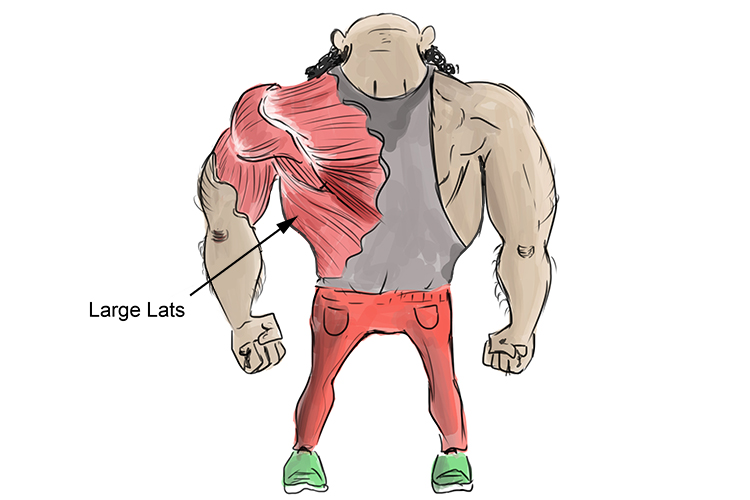
Laterally – means sideways
This came about because if you hold a word up in front of a mirror it looks like the word has flipped sideways (not up and down).
See below for a view of the word ambulance reflected in a mirror.
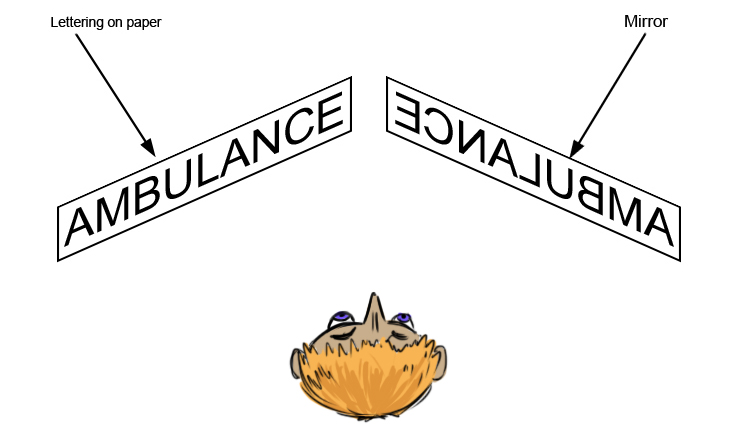
But "sideways" is not quite correct.
If you stand in front of a mirror and lift your right hand it will look like you are lifting your left hand. It is interesting that both are pointed to the same side.

But if you now point to yourself it will look like you are pointing in opposite directions.
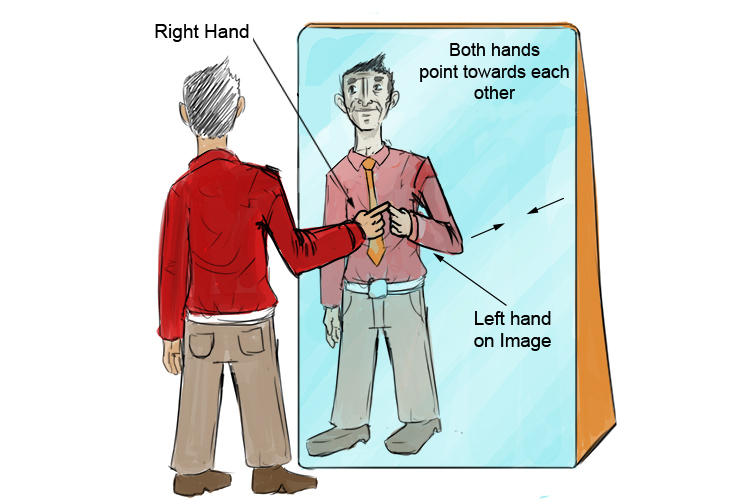
The way to think about lateral inversion is to remember what a hand impression in mud would look like.
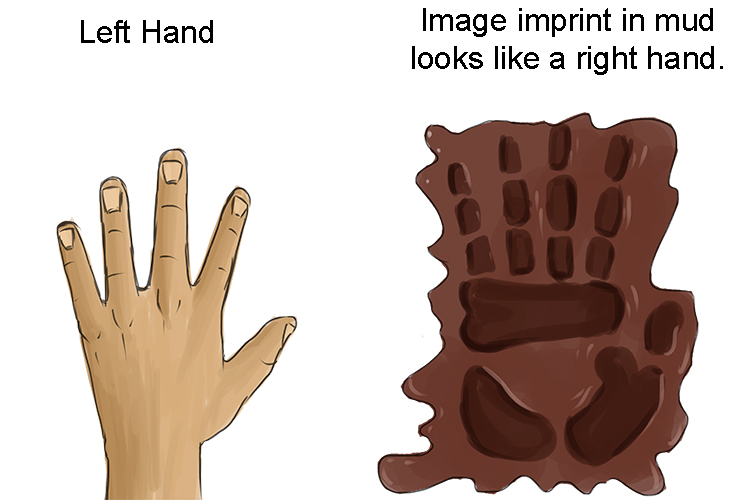
The imprint of your left hand would look like the right hand.
It's not east to west that has been reversed, it's the front and back that have been reversed. The person has been pushed back and forwards like turning a glove inside out.
The actual inversion is of the `Z` axis (if we ever need to get technical).

To plot how a word is laterally inverted, you apply the same laws of reflection that we have already learnt.
The first stage is to draw an image on the other side of the mirror perpendicular (at 90°) to the mirror.
Behind the mirror
Equal distance
Same size
In the example of reflecting the word "No" in a mirror we can work out what the image would look like in a mirror.
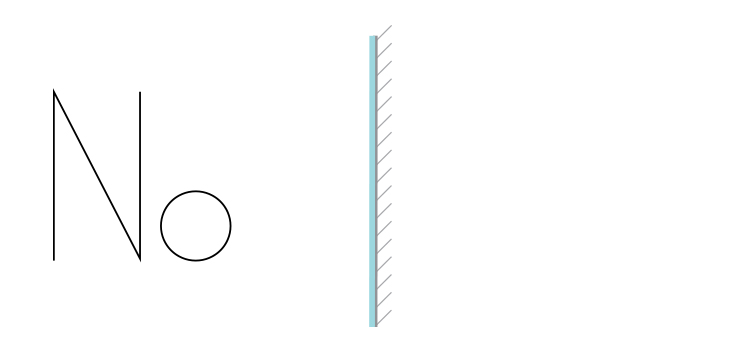
This would become the following:

NOTE: First plot the tops and bottoms of each of the letters.
Finally this would become:
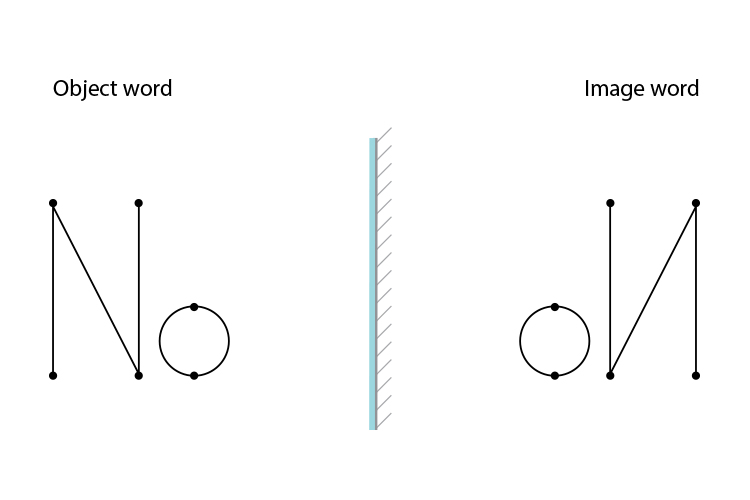
The image word is how the word NO would look if you held it up in front of a mirror.
Conclusion
If you are asked in an exam to describe three properties of the image you see in a plane mirror you can say.
Behind the mirror (virtual)
Equal distance
Same size
Upright
and now – Laterally inverted




